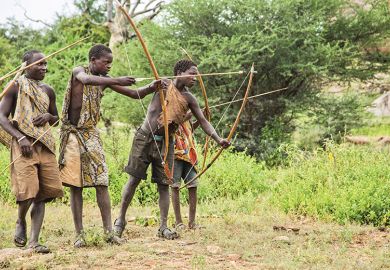This book is the product of an international symposium on "The Yoruba Artist" and dedicated to William Fagg who did so much to establish Yoruba arts as a field of study. Unsurprisingly, many of its papers hark back to themes first raised in his own dedicated researches since many of the now well-patinated writers initially cut their teeth on his pioneering works and the list of authors reads like a classic bibliography of a course in African art. The papers are divided up into three sections - each with its overview introduction - concerned with tradition and creativity, arts and culture and "Transactions, Transitions and Transformations" ie diaspora and contemporary stuff. Basic to it all is the notion that the anonymity of the non-western artist is in the eye of the western critic, that African artists were and are known. To deny it breeds the nonsense noted in part three of the book where an African painter can be viewed as copying Picasso because Picasso drew on African forms.
The subtitle is a little misleading. After all, most of the essays here are deliberately art historical, dealing with matters as concrete as the biographies of particular artists, the identification of individual sculptors, the iconography of known works and different individual styles of performance rather than more general theory. The Yoruba are certainly among the best studied of African peoples yet there is a danger abroad, especially in the United States, of seeing them as typifying Africa as a whole. The manner in which these papers are best assessed, the relation of the general to the particular, is set by John Picton's subtly subversive introduction. How "Yoruba", he asks disarmingly, are the Yoruba? The most concrete matter is suddenly highly theoretical.
Within a volume of this kind, it is hardly to be expected that all participants will be in agreement with each other - let alone with Faggian orthodoxies - and indeed, if they were a lot of its value would be lost. Differences of opinion tend to be rather obscured by leaping back and forth across the Yoruba specific/general theory line. One of the strengths of this volume is that many of the writers are Yoruba and the level of linguistic competence demanded is high. The appeal to an indigenous critical discourse, concepts such as ase, itan and so on, seems at times to leave western researchers high and dry. So Drewal and Picton's calls for an approach to Yoruba arts that goes beyond western logocentrism is somewhat at odds with the demands of the second section to examine the parallels between oriki praise poetry and other Yoruba artistic forms in accordance with specifically Yoruba modes of thought. The conflict, if such it be, is not examined.
Many of the essays in the second section apply Drewal's fruitful notion of Yoruba seriate structure, where elements aim not at wholeness or completeness but at a distinctness of parts that emphasises fluidity and indeterminacy. "The world is a marketplace," say the Yoruba. It is one of those handy multi-media concepts - for which the Yoruba may or may not have a word - that seems to carve experience at the joints and introduces order where all before seemed chaos.
This is a book that deals not simply with the standard art of sculpture, for which the Yoruba are justly renowned, but also with neglected forms such as drumming, divining and architecture. Its focus on a single people adds depth. As the Yoruba themselves say, "If you want to make foam, you have to pee in one spot."
Nigel Barley is assistant keeper, department of ethnography, British Museum.
The Yoruba Artists: New Theoretical Perspectives on African Arts
Editor - Rowland Abiodun, Henry Drewal and John Pemberton III
ISBN - 1 56098 339 6 and 340 X
Publisher - Smithsonian Institution Press
Price - £50.75 and £19.95
Pages - 5
Register to continue
Why register?
- Registration is free and only takes a moment
- Once registered, you can read 3 articles a month
- Sign up for our newsletter
Subscribe
Or subscribe for unlimited access to:
- Unlimited access to news, views, insights & reviews
- Digital editions
- Digital access to THE’s university and college rankings analysis
Already registered or a current subscriber?



